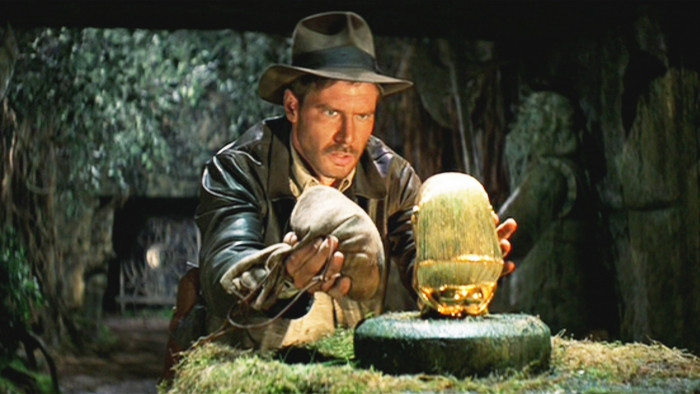27 mind-blowing facts about the making of Planet Earth II
In case you needed any more reasons to be impressed


The one thing we find ourselves repeatedly asking when watching Planet Earth II is how? How?!
With great, great effort it would seem. And you know it, because none of us would be so enthralled by the shots we see on Planet Earth II if we had seen them before.
We know we’re watching something special, like that time someone threw an egg at Simon Cowell on live TV except better. The show alone is worth paying your TV license.
The show’s producer and the BBC’s creative director of the natural history unit, Mike Gunton, has said that they’d be crazy to rule out a third series but that it would take at least five years.
Let’s not ruin our day by fretting over whether David Attenborough will last that long (blasphemy!), and instead look at these facts which show some of the (time consuming) magic that happens behind the scenes to make the greatest nature documentary ever:
- The Islands episode was three and a half years in the making, including a year of preparation before any cameras were so much as switched-on.
- The final version of the Islands episode required 12 separate location shoots, ranging from two to six weeks at a time.
- Much more than a one-take marvel, the already legendary iguana vs snake showdown (which has since clocked more than seven million hits on YouTube) was the product of two weeks’ sunrise-to-dusk watching of the beach.
- The debut episode of the series, Islands, became the best performing first episode of a natural history programme in 15-years with 12.3 million viewers.

- Capturing penguins on Zavodovski Island in the South Atlantic required nine days of travel.
- The producer of the Islands episode spent two weeks in the same clothes, which were shat on by one penguin and puked on by another.
- While filming in tropical locations, crews were bitten by mosquitos (during the day) and centipedes (during the night) through their clothes.
- The teams can’t use insect repellent in case the animals smell you.
- During a shoot in Panama, the Islands crew returned to their sleeping quarters to finds a boa constrictor eating their supply of eggs.

- One of the crew for Islands was stung by a stingray and the team struggled to get him medical help as they were two hours away from the mainland.
- In cold climates, the crew would have to strip down to their thermals and shove any wet clothing into their sleeping bags to let them steam off, and surround themselves with electronics so they don’t freeze.
- It took seven days of sitting in a hide to catch a glimpse of Wilson’s bird of paradise, and three weeks waiting for a female to turn up to film the mating ritual.
- While filming Grasslands, the crew witnessed the death of 150,000 antelope due to a bacterial disease

- It took three months to capture the lion vs buffalo scene in Grasslands. Before they got the shot, the crew’s boat got stuck in the vegetation and they had to walk through the shoulder-high dark swamp with bare feet - to make sure they would feel the scaly skin and move their leg out of the way quickly if they stood on a croc.
- The camera traps that caught the snow leopards in action were set up in the Himalayas for a year, and one crew member narrowly missed a rock fall while setting them up.
- While filming a billion locusts, the Deserts team were followed by armed bandits.
- The Islands team’s kit and clothes had to be put in quarantine before they got onto the Galapagos Islands. Their stuff was sprayed, frozen and embargoed.

- On a normal shoot, there are 30-40 cases of kit the crew need to lug around, and they’re only allowed one personal bag.
- It took nine months to get a permit to shoot the peregrine falcons in NYC in Cities.
- Planet Earth II went into production a whole six years ago.

- Filming Planet Earth II required 42 separate camera operators, each shooting in ultra high definition 4k (the first BBC-produced series to do so).
- A whopping 400 terabytes of footage was recorded – equivalent to 82,000 DVDs.
- There were 2,089 days spent in the field for the series, made up of 117 different filming expeditions.

- More commonly known for his epic scores of Inception, Gladiator and The Dark Knight trilogy, composer Hanz Zimmer provided the musical accompaniment to Planet Earth II.
- After the Sigur Ros track Hoppipollawas used in the original Planet Earth marketing campaign in 2006, the BBC asked the band to provide a new version of the song for the latest series. After locating the original track stems, the Icelandic group reworked a new take on the track.
- Originally announced with the working title One Planet in 2013, the name was later switched to Planet Earth II.
- Sir David Attenborough may not be on location any more (he’s 90, give him a break) but he’s still involved in the script. He phones producers and challenges them to make sure what he’s saying is accurate and tells a good story.
Latest
Related Reviews and Shortlists


The 10 best war movies of the 21st century








